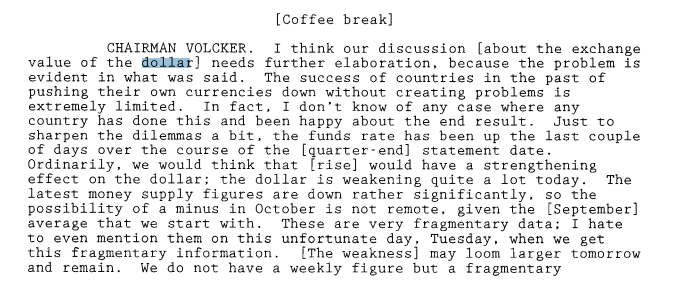Also the aesthetics of aromatherapy.
From FT Alphaville:
The Plaza Accord, then and *cough* now?
...Which leads us, naturally, to a partial Fed transcript from August 1985:

… and more about what happened in October 1985 here....MORE
When you’re done with that, here is a true sentence about currency pegs from Deutsche’s Alan Ruskin, with our emphasis:
Pegs hold up best when the country with the strong currency is happy to pursue policies to weaken their currency. It is usually far easier to weaken a currency through intervention, than raise interest rates or intervene (especially in unsterilized fashion) against market forces that are pushing in favor of currency weakness. This asymmetry has important implications for the appropriate policy path going forward.It’s a sentence Chinese policymakers will not have needed to read. Particularly now that Soros has hurt their feelings — for which, of course, he “will pay a painful price” … and “will fail in his war on the RMB and HKD, of this there can be no doubt.”
Nobody said shorting China would be easy.
So where does that top par from Ruskin on the nature of FX pegs leave us and the RMB? Well, somewhere quite odd if China can’t stop its outflows.
To be clear, the betting is it can through some combination of capital controls and management of FX expectations. But the expectation angle especially relies upon confidence and as Goldman have said recently when discussing those ongoing outflows (their analysis suggests a cumulative $550bn in net capital outflows since mid-2015, btw, but more on that in the usual place)
… the correlation of the pace of CNY depreciation (against the USD) and FX outflow size in the last several years. This suggests that a 1% CNY weakening vs. USD could result in as much as $100bn in FX outflow, presumably reflecting a deterioration in RMB confidence (and hence faster outflow) when currency depreciation is observed....